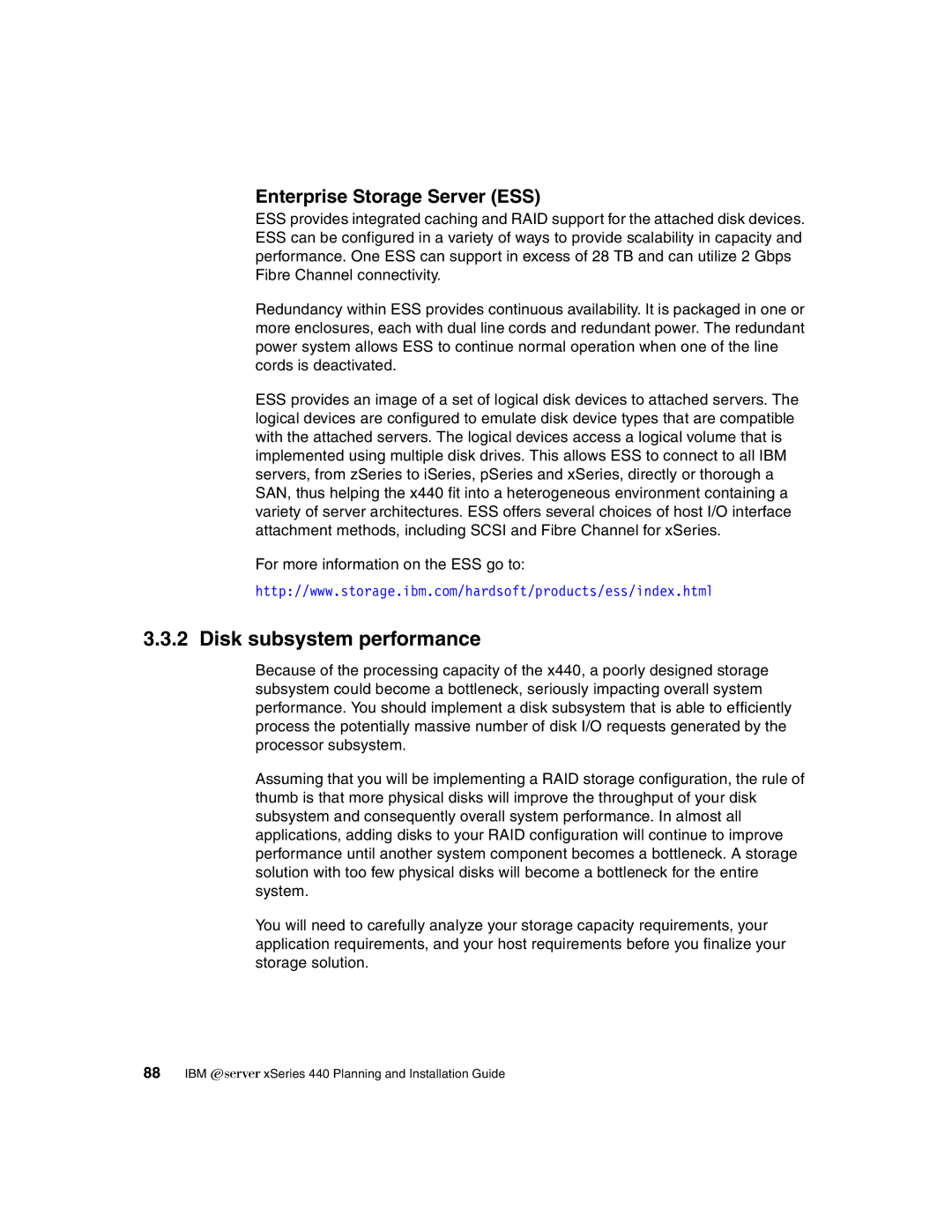Enterprise Storage Server (ESS)
ESS provides integrated caching and RAID support for the attached disk devices. ESS can be configured in a variety of ways to provide scalability in capacity and performance. One ESS can support in excess of 28 TB and can utilize 2 Gbps Fibre Channel connectivity.
Redundancy within ESS provides continuous availability. It is packaged in one or more enclosures, each with dual line cords and redundant power. The redundant power system allows ESS to continue normal operation when one of the line cords is deactivated.
ESS provides an image of a set of logical disk devices to attached servers. The logical devices are configured to emulate disk device types that are compatible with the attached servers. The logical devices access a logical volume that is implemented using multiple disk drives. This allows ESS to connect to all IBM servers, from zSeries to iSeries, pSeries and xSeries, directly or thorough a SAN, thus helping the x440 fit into a heterogeneous environment containing a variety of server architectures. ESS offers several choices of host I/O interface attachment methods, including SCSI and Fibre Channel for xSeries.
For more information on the ESS go to:
http://www.storage.ibm.com/hardsoft/products/ess/index.html
3.3.2 Disk subsystem performance
Because of the processing capacity of the x440, a poorly designed storage subsystem could become a bottleneck, seriously impacting overall system performance. You should implement a disk subsystem that is able to efficiently process the potentially massive number of disk I/O requests generated by the processor subsystem.
Assuming that you will be implementing a RAID storage configuration, the rule of thumb is that more physical disks will improve the throughput of your disk subsystem and consequently overall system performance. In almost all applications, adding disks to your RAID configuration will continue to improve performance until another system component becomes a bottleneck. A storage solution with too few physical disks will become a bottleneck for the entire system.
You will need to carefully analyze your storage capacity requirements, your application requirements, and your host requirements before you finalize your storage solution.
